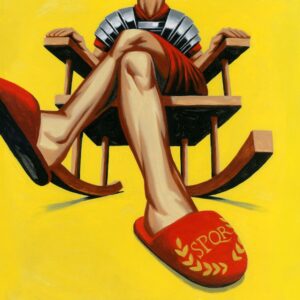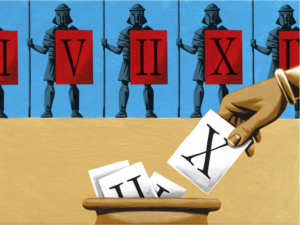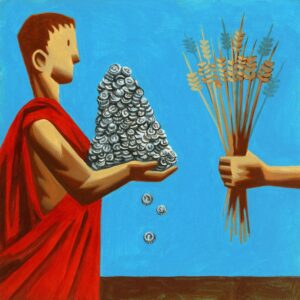From the Knights Templar to the Diners Club, people have long traded in promises instead of cash
March 17, 2022
On March 6, Amex, Mastercard and Visa announced that they were suspending their operations in Russia. The move will deal a blow to Russian commerce, as a life tied to cash and checks can be cumbersome in the extreme.
The Mesopotamians were among the first known to grasp the usefulness of the charge account. The extensive trade between Mesopotamia and the Indus Valley made regular shipments of gold highly impracticable. Instead, traders used seals and clay tablets to keep running tallies for settlement at a future date.
Greek and Roman travelers relied on letters of creditworthiness from their personal banks. But this practice died out during the Dark Ages. The Knights Templar revived it during the 12th century as one of their services to Christians traveling to Jerusalem. Pilgrims could deposit their money at any Templar house, receive a “letter of credit” and use it to withdraw funds from the Temple stronghold in Jerusalem.

Illustration: Thomas Fuchs
The letter of credit eventually evolved into the bill of exchange, or promissory note, between banks, used for business transactions. In 1772, the London Exchange Banking Company in England offered its clients a version for everyday use: Called “circular notes,” they were issued in set denominations, could be cashed in many major cities and were guaranteed against loss and theft.
The idea was slow to catch on in the United States until a freight transport business called the American Express Company decided its real profits lay in facilitating the movement of money. Having already enjoyed considerable success with money orders, in 1891 it rolled out the American Express traveler’s check, which merely required the owner’s counter signature to be valid.
The traveler’s check was by no means the only alternative to cash. By the late 19th century, most department stores had tokens, often personalized metal key fobs, that loyal customers could present in lieu of immediate payment. After World War I, oil companies went a step further, offering “courtesy cards” that could be used at their gas stations. Airline companies and hotels did the same.
The profusion of charge cards soon became onerous. In 1946, a Brooklyn bank experimented with the Charg-It Card, which could be used at local businesses. Three years later, so the story goes, New York businessman Frank X. McNamara was dining at a restaurant with clients when he realized he was out of cash. The ensuing embarrassment inspired him to propose a new kind of charge card: one that was members-based, would work anywhere and earned its profit by charging each customer an annual fee.
The Diners Club card had more than 10,000 members by the end of its first year. The first bank to copy the idea was Bank of America in 1958. Its BankAmericard—which became Visa in 1976—allowed card owners to pay interest rather than settling their monthly bill. By the mid-’60s, other banks were scrambling to imitate what had effectively become a cash-cow. The most successful competitor was a consortium of banks behind the Interbank Card, today known as Mastercard.
The first bank outside the U.S. to offer a credit card was Britain’s Barclays Bank in 1966. But by then Visa and Mastercard were already expanding to other countries, setting the stage for the global duopoly they are today.
Vladimir Putin may have difficulty charging his next holiday to his Visa. But he can still use his China-backed UnionPay card—for now.
Appeared in the March 19, 2022, print edition as ‘Paying With Plastic Is New, But Credit Isn’t’.









